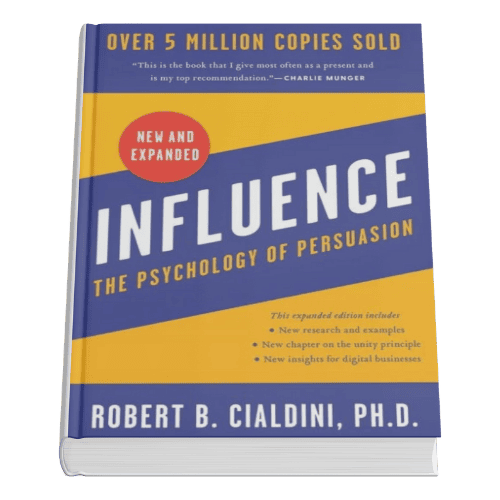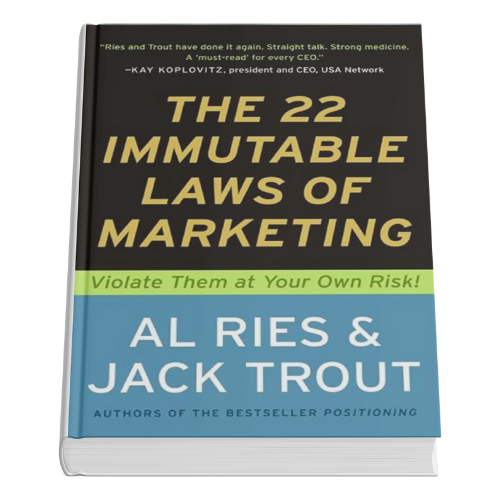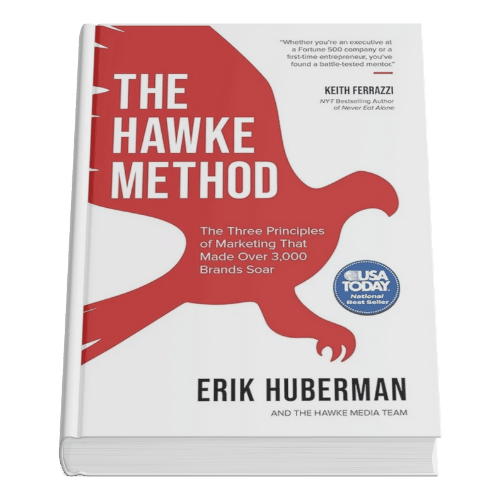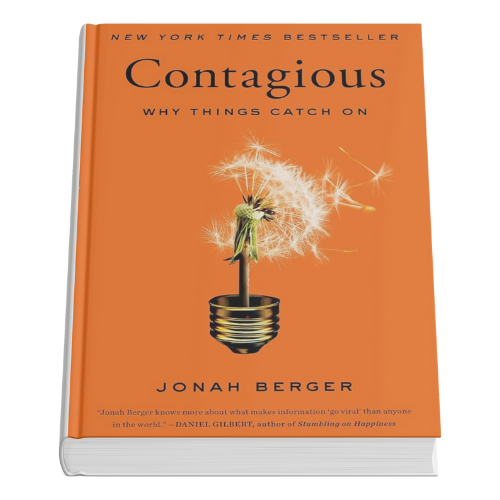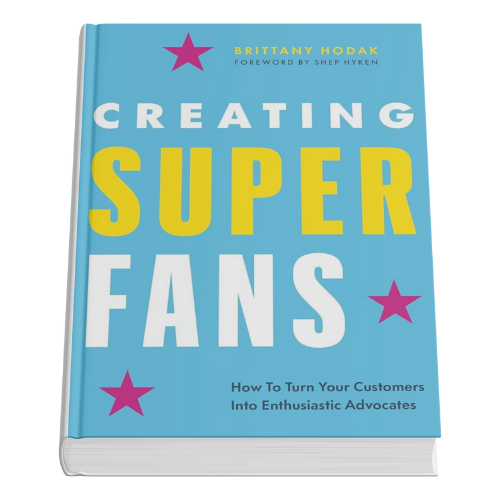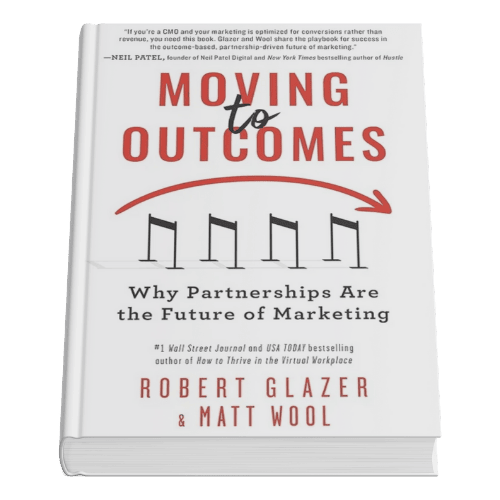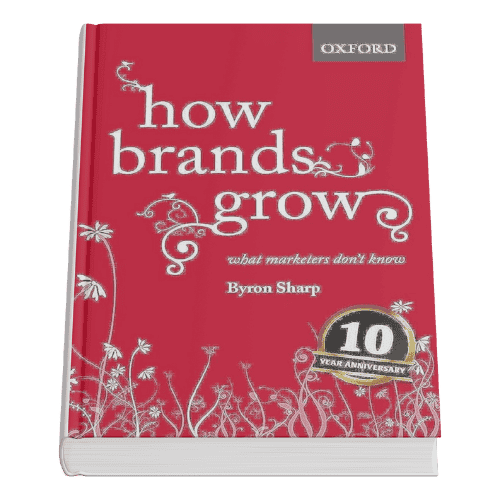
As a digital marketer, I’ve found that nothing beats the depth and focus of a great marketing book. Sure, we live in a world of blogs, tweets, and TikToks, but those quick hits often only scratch the surface.
The internet is full of snippets and broad strokes; books are where you get the nitty-gritty details from real pros. In fact, many of today’s marketing “gurus” are just recycling ideas that were documented in books decades ago.
That’s why every year I make it a point to start the year by reading several interesting books about marketing. It’s the perfect way to gain new perspectives and revitalize my approach.
2025 is a fascinating time to up your marketing game. Below, I’ve curated an updated list of the best marketing books to read now, focusing on digital marketing in particular. These books range from timeless classics (with lessons that still apply in the internet age) to cutting-edge guides hot off the press. Each one taught me something unique.
Grab a cup of coffee (or three) and let’s dive into my top marketing book picks for 2025. I’ll share what makes each book special and how it changed the way I approach marketing. (And yes, every one of these is available on Amazon — perfect for filling up that cart with your next great read!)
Table of contents
1. Influence: The Psychology of Persuasion (New & Expanded Edition) by Robert Cialdini.
Why do people say “yes”? This updated classic by Dr. Robert B. Cialdini is a must-read to understand the psychology behind what makes anyone click, buy, or believe.
Influence breaks down the universal principles of persuasion — like reciprocity, social proof, and scarcity — that marketers (and anyone, really) can use to ethically sway decisions. Even though its insights apply far beyond marketing, it’s especially useful for us marketers because it reveals the underlying reasons why certain strategies work and others flop.
Reading this book was a game-changer for me. I started spotting Cialdini’s principles everywhere in my campaigns and could better engineer marketing tactics that actually resonate with human psychology. The 2021 expanded edition even adds a seventh principle (Unity), bringing fresh research into the mix.
If you want to craft campaigns that truly connect and convert, Influence will fundamentally sharpen your understanding of consumer behavior.
Seth Godin’s modern marketing manifesto feels like a friendly chat that gently upends your assumptions. Godin reminds us that good marketing isn’t about spamming every channel or gaming algorithms, it’s about empathy, service, and making meaningful change.
He urges marketers to seek the smallest viable audience and focus on building trust and community, rather than chasing everyone.
Reading it felt refreshing; it validated that doing work you’re proud of is the smart strategy.
Godin shares how to identify your target market, position your offering, and tell stories that matter in a world of endless noise.
This book shows how to shift from gimmicks to genuine customer connection.
My big takeaway was learning to “see” my audience better, understanding their hopes, fears, and worldviews.So I can serve them in a way that builds true fans.
This Is Marketing is like a compass for navigating modern marketing with integrity and impact.
Here’s a classic that refuses to go out of style. First published in the ’90s, 22 Immutable Laws distills marketing down to enduring truths about positioning, perception, and strategy.
In an age of AI and TikTok, do these laws still hold up? Absolutely. This book is straight shelf-stable brilliance.
Ries and Trout deliver 22 punchy laws that show why being first in the customer’s mind beats being “better,” and why carving out a unique position is everything.
I love how each chapter is a quick lesson that hits you with an “ah-ha” insight. Sometimes I feel lost in a sea of new marketing trends, but revisiting the fundamentals in this book is a great reset.
It reminds me that marketing isn’t about chasing every shiny new tactic; it’s about understanding how minds work.
This slim volume is decades old, but reading it in 2025 gave me a surprising amount of clarity for solving modern marketing challenges.
Think of it as timeless wisdom for any marketer — if you haven’t read it yet, you’re in for a treat (and a few reality checks).
If you create content (and these days, who in marketing doesn’t?), Epic Content Marketing is like a masterclass in doing it right. This book was originally a genre-defining hit back in 2013 — and in 2023, Pulizzi teamed up with Brian Piper to fully revise and update it for the digital world we live in.
The new edition is packed with insights on today’s content landscape: from SEO and blogging basics to newer topics like building audiences on social media, content entrepreneurship, and even NFTs and Web3 communities.
What I love is how practical it is. Pulizzi lays out how to develop a content strategy that breaks through the clutter, earns trust, and ultimately drives profitable action.
The book had me nodding along with its advice on delivering real value before asking for anything in return (a principle that’s even more important now that consumers tune out blatant advertising).
Thanks to this updated guide, I’ve been able to audit and refine my content efforts—focusing more on quality storytelling and less on chasing virality.
Epic Content Marketing will give you a rock-solid blueprint for engaging your audience in 2025 and beyond, whether you run a blog, a YouTube channel, a podcast, or a TikTok account for your brand.
This book completely changed how I approach content and communication – both with customers and within my team. They Ask, You Answer is built on a brilliantly simple concept: win trust by obsessively answering your customers’ questions.
Sheridan famously saved his failing pool business by openly addressing every question or concern customers had (including pricing) on his website – and in doing so, became the go-to expert, skyrocketing his sales. The book is a straightforward guide with practical tactics for adopting this philosophy in your own marketing.
Reading it felt like a wake-up call. I realized how often we dance around tough questions or hold back information in marketing – and how that actually undermines credibility. After implementing They Ask, You Answer principles, I saw firsthand how transparency can turn a website into “the ultimate sales and marketing tool” for our business.
Customers want to be educated; if you become their most trusted teacher, you’ll win their business. Sheridan’s approach is especially powerful for content marketing, SEO, and sales enablement in the digital age. This revised edition even updates how to apply these ideas with today’s tech-savvy buyers. If you want a playbook for building trust online and becoming the authority in your niche, this is it
When it comes to online marketing funnels, this book is practically the Bible. DotCom Secrets spills the secrets (pun intended) of how to attract visitors, convert them into leads, and ultimately customers through carefully crafted sales funnels.
Brunson is the co-founder of ClickFunnels, and he’s distilled his years of testing into a step-by-step playbook for growing your company online. I was initially skeptical of the hype (the word “secrets” made me wary), but wow – this book over-delivers. It walks you through creating landing pages, email sequences (like the famous “Soap Opera Sequence”), value ladders, and more, all grounded in solid customer psychology and messaging frameworks.
What makes the updated 2020 edition great is that it refreshes the examples and case studies for today’s landscape, ensuring the tactics feel current. I found myself dog-earing almost every chapter with ideas to try. Brunson doesn’t focus on short-term hacks; he lays out a systematic approach to turn strangers into loyal customers online.
If you sell anything on the internet, DotCom Secrets will give you a proven funnel framework that you can adapt to your business. Pair this foundational wisdom with newer digital tactics, and you’ll be miles ahead of most marketers out there.
Ever wonder how today’s fastest-growing startups (think Airbnb, Uber, Facebook) went from scrappy to sky-high? Hacking Growth takes you behind the scenes of that rocketship ride.
This book, by the guy who coined the term “growth hacking” (Ellis) and a leading growth expert (Brown), is both an inspiring storybook and a hands-on toolkit. It demystifies the processes used by growth teams to drive rapid customer acquisition, retention, and revenue.
What I appreciate is that it doesn’t paint growth hacking as magic or luck; it’s a repeatable methodology. The authors walk you through running experiments, analyzing data, and finding your own company’s growth levers in a very accessible way.
When I read it, I immediately started looking at my campaigns in a new light: I set up cross-functional “growth tests” with small tweaks to onboarding flows, subject lines, pricing offers – you name it – and measured the impact.
The results were tangible and addictive! Hacking Growth also emphasizes deeply understanding your user journey. For any marketer or entrepreneur, this book provides a playbook for systematically creating your own growth strategy and replicating the success of the big names, rather than just admiring it from afar.
This is one of the newest books on my list (published in 2025), and it could not be more timely. Audacious by Mark Schaefer is essentially a battle cry for human-centered marketing in an era saturated with AI and automation.
The premise: when every brand is using algorithms and mass-produced content, the way to stand out is to be boldly, brilliantly human. Schaefer shows how to break through the noise by doing the unexpected and injecting genuine humanity into your marketing.
I picked this up after seeing a respected CMO rave about it on LinkedIn, and it blew me away. The book is packed with jaw-dropping case studies of companies that ditched the “safe,” data-driven playbook and won big by taking audacious, creative risks.
Beyond the flashy stuff, Schaefer provides over 100 actionable ideas on being more daring and emotionally intelligent in how we connect with customers.
Reading it has definitely inspired me to infuse more human touch and bravery in my campaigns – to zig when others zag. If you’re tired of cookie-cutter digital tactics, Audacious will challenge you (in the best way) to rethink how you build brand loyalty in an AI-powered world.
Sometimes, success comes down to sticking with the basics – executed brilliantly. The Hawke Method simplifies all of marketing into three core pillars: Awareness, Nurturing, and Trust.
Erik Huberman, who’s helped grow thousands of companies as CEO of Hawke Media, argues that any marketing initiative can be analyzed and optimized by looking at these three areas.
I found this framework incredibly clarifying. Awareness: How are you introducing new people to your brand? Nurturing: How do you engage and educate them from first touch until they buy (and afterwards)? Trust: How are you building credibility so they feel safe choosing you?
As I read through, I was mentally auditing my own marketing plans against these pillars. Sure enough, whenever a campaign underperformed, I could trace it back to a neglect of one of the three (e.g., we were driving tons of traffic but not nurturing leads effectively, or we had great product emails but little social proof to build trust).
Huberman packs the book with real examples and tactics for each pillar, essentially giving you a solid blueprint for a marketing strategy that scales.
The beauty is in its simplicity: focusing on awareness, nurturing, and trust ensures you’re covering the full customer journey, not just the top-of-funnel flash. This book’s lessons on balancing those three elements have been invaluable to me for keeping marketing plans both comprehensive and laser-focused.
What makes an idea go viral? Why do certain products or campaigns get everyone talking (and sharing) while others flop? Wharton professor Jonah Berger dissects these questions brilliantly in Contagious. This book is like a deep dive into the science of word-of-mouth and social transmission.
Berger introduces the STEPPS framework – six principles (Social Currency, Triggers, Emotion, Public, Practical Value, Stories) that drive people to share ideas and products. I remember reading Contagious and immediately recognizing these factors in the wild: “Oh, that YouTube challenge spread because it had a perfect trigger,” or “This app blew up because it gave people social currency to talk about.” The book is full of real-world examples that illustrate why some content spreads like wildfire.
It helped me add an extra filter to my campaign brainstorms – I now ask, “Would anyone actually share or talk about this? What’s the built-in hook that would make it contagious?” One of Berger’s claims is that word-of-mouth is the driving force behind most purchase decisions, more than ads.
So, as digital marketers, we can all benefit from learning how to get people whispering about our stuff. Contagious will give you the psychological tricks to engineer more buzz around your brand.Plus, it’s a fun, story-packed read that might just spark your next big campaign idea.
In the age of short attention spans, the brands that win are the ones with crystal-clear messaging. Building a StoryBrand taught me that marketing is really about telling a compelling story where your customer is the hero.
Donald Miller lays out a simple yet powerful seven-part framework inspired by timeless storytelling principles (think hero’s journey) to help you clarify your message. The idea is to stop confusing people with jargon or too many ideas; instead, invite them into a narrative where your product/service is the guide that helps them achieve their goal.
As I worked through this book, I actually paused to rewrite one of my company’s landing pages using the StoryBrand approach. The difference was night and day: bounce rates went down and conversions improved, all because the messaging finally clicked with the audience.
Miller provides plenty of examples and even a free online tool to help implement the framework. This book is a must-read for anyone working on branding or copywriting, especially in digital channels where you have mere seconds to communicate your value. It helped me see that a confused customer will never buy – and that clarity (with a bit of narrative flair) can be an unfair advantage. If you want customers to instantly “get” what you’re about and feel an emotional pull to your brand, Building a StoryBrand is the guide you need.
At the end of the day, the real magic in marketing isn’t just getting a customer to buy – it’s making them so delighted that they sing your praises to everyone they know.
In Creating Superfans, Brittany Hodak dives into the art and science of turning ordinary customers into passionate brand advocates. This book came out recently (2023), and it’s perfect for the era where customer experience often trumps advertising.
Hodak argues that every interaction a customer has with you is an opportunity to build fandom. She shares a step-by-step framework for mapping your customer journey and identifying moments to wow people and exceed expectations.
What I loved were the many examples of small, affordable touches that create big loyalty. As I read, I started to see my own consumer experiences in a new light and took notes on what we could do better in our business.
Hodak’s passion is infectious, and by the end, I was buzzing with ideas to implement. In a world where reviews, referrals, and word-of-mouth can make or break you, Creating Superfans shows that great brands don’t just have customers, they have fans.
This book will inspire you to close the gap between marketing and customer success, ensuring the hype you create is matched by extraordinary customer happiness.
If you’re focused on performance marketing and ROI (and let’s face it, most of us are), this book presents a provocative idea: the biggest untapped lever in digital marketing is partnerships.
Moving to Outcomes argues that channels like affiliate marketing, influencer collaborations, and co-marketing partnerships are key to scalable growth, because they directly tie marketing spend to results.
Glazer and Wool, who are experts in the affiliate space, make a compelling case that partnership programs can drive efficient customer acquisition at a lower cost, since you’re essentially paying for results, not just reach.
Another key insight from the book is how the authors shift the mindset from activity-based marketing to outcome-based partnerships. They emphasize that brands should no longer measure success by clicks, impressions, or “brand exposure,” but by tangible business results; revenue, customer acquisition, retention, and lifetime value.
The book pushes marketers to build partnerships where both sides share risk, reward, and a commitment to performance, creating a more sustainable and mutually beneficial growth model.
Reading this book gave me a fresh perspective on budget allocation. We often dump money into Facebook or Google and hope for the best, but Moving to Outcomes shows there might be a smarter way to guarantee ROI: align your spending so you only invest when you know you’re getting a customer.
The authors also share frameworks for structuring partnership programs and measuring their impact (so it’s not just theory). For anyone looking to make marketing more profitable and accountable, this book is a goldmine. It certainly pushed me to explore partnerships as a bigger piece of our digital strategy, and already I’m seeing more efficient returns by doing so.
Brace yourself – this book might challenge a lot of what you (and many marketing “experts”) hold dear. How Brands Grow is often hailed as one of the most important marketing books of the last 20 years. and for good reason.
Professor Byron Sharp presents evidence-backed research that upends popular myths about loyalty, targeting, and brand growth. His central finding: brands grow primarily by reaching more people (market penetration) and being easily available (mentally and physically), rather than by driving deeper loyalty among existing customers.
In other words, the double jeopardy law, not the Pareto Principle, rules in marketing. This book was an eye-opener for me. It made me rethink segmentation strategies and loyalty campaigns, realizing that light buyers and broad reach are actually the keys to scale.
The data he shares (spanning decades and categories) is hard to ignore. While some of it feels counterintuitive at first, it ultimately transformed how I think about marketing strategy.
I now approach media planning and targeting with a much bigger emphasis on penetration and mental availability metrics, rather than niche targeting or gimmicky engagement stats.
If you’re a modern marketer who wants to ground your strategy in empirical evidence (and maybe win a few debates with colleagues still chasing loyalty unicorns), How Brands Grow is indispensable.
Conclusion:
Writing about these books has me itching to re-read a few of them — they’re that good. Each one has left a mark on how I practice marketing in the digital age. Whether it’s a century-old classic like Scientific Advertising (which nearly made this list for introducing concepts like split-testing way back in 1923) or a brand-new release like Audacious, the common thread is that great marketing books help us see the world a little differently. They challenge us, inspire us, and often provide that one nugget of insight that elevates our next campaign from good to epic.
As you plan your 2025 reading (and marketing) list, I highly recommend grabbing a couple of the titles above. Marketers often joke that we’re “always students” — and it’s true. The landscape might change (hello, algorithm updates and new platforms), but the core principles and innovative ideas in these books will keep you grounded and ahead of the curve.
Plus, there’s something almost meditative about slowing down with a book in our hyper-paced profession; it restores focus and gives you an edge that most TikTok tutorial watchers won’t have
Happy reading, and here’s to a year of marketing breakthroughs!
Related Posts

